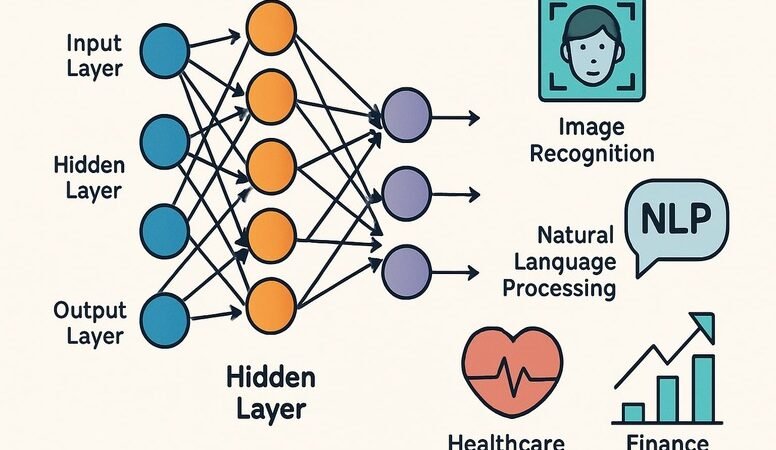AI’s Architecture is more than just a technical framework; in fact, it’s about designing intelligent systems that can learn, reason, and evolve. Artificial Intelligence (AI) goes beyond automating tasks or mimicking human thinking—its architecture forms the foundation for building scalable and efficient AI solutions. Therefore, understanding this architecture is essential for anyone working in AI development.
What is AI’s Architecture?
AI’s Architecture refers to the framework or structural design that supports the development, deployment, and operation of AI systems. Just like a building needs a solid blueprint, AI systems require a well-structured architecture to process data, learn patterns, make decisions, and communicate with users or other systems. Consequently, a strong AI’s Architecture ensures that the system remains efficient, scalable, reliable, and accurate in performing its tasks.
Key Layers of AI’s Architecture
- Data Layer: This layer consists of data sources and storage solutions. It includes databases or cloud storage that house large amounts of data for analysis and training AI models. The quality and quantity of data in this layer play a critical role in the performance of the AI system.
- Processing Layer: Here, data is cleaned, pre-processed, and transformed into a format that can be used for machine learning models. Technologies such as Apache Spark or Hadoop are used for efficient data processing. This stage ensures that data is in the right condition for the next steps.
- Algorithm Layer: This layer is the heart of AI architecture. It includes the machine learning algorithms that analyze the processed data and make predictions or decisions. The algorithm layer determines how well the AI system can learn and adapt based on the data it receives.
- Interface Layer: This is where users interact with the AI system. It could be through a web interface, a mobile application, or an API (Application Programming Interface). The interface layer enables users to communicate with the AI system and retrieve insights or actions.
Types of AI’s Architectures
- Rule-based AI Systems: These are the most basic form of AI, following predefined rules to make decisions. While they work well in structured, predictable environments, they struggle when faced with complexity or ambiguity.
- Machine Learning-based Systems: These systems learn from data and improve over time. Unlike rule-based systems, they adapt to new information and can handle a variety of tasks, making them more flexible and scalable. However, they require large datasets to perform well.
- Hybrid AI Architectures: These combine rule-based systems and machine learning techniques, leveraging the advantages of both approaches. Hybrid architectures are useful in scenarios where some tasks are well-defined, and others require learning and adaptation.
Why AI’s Architecture Matters
A well-designed architecture ensures that the system can process large volumes of data, learn efficiently, and make accurate decisions. Without a solid architecture, AI systems would struggle to perform effectively, limiting their potential in real-world applications. It provides the foundation for growth and improvement, ensuring scalability and reliability.
Future Trends in AI’s Architecture
The future of AI architecture is evolving rapidly. Some emerging trends include:
- Quantum Computing: Quantum computing has the potential to significantly accelerate AI processing by handling complex calculations much faster than classical computers.
- Neuromorphic Engineering: Inspired by the structure and function of the human brain, neuromorphic engineering aims to create more efficient and flexible AI systems. These systems are expected to have improved learning capabilities and energy efficiency.
- Explainable AI: There’s a growing demand for AI systems that are transparent, explainable, and fair. As AI systems become more integral to decision-making, ensuring that their processes are understandable and free from bias is crucial.
Conclusion
AI’s Architecture serves as the backbone of intelligent systems, dictating how they process data, learn, and interact with the world. Moving forward, innovations like quantum computing and neuromorphic chips will lead to smarter, faster, and more reliable AI solutions. A solid AI’s Architecture isn’t just a technical requirement—it’s the key to unlocking AI’s full potential across industries and daily life.








